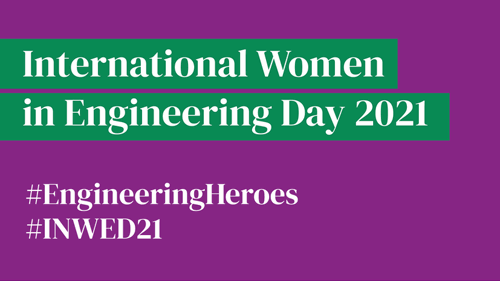How did you get into Engineering?
My route wasn’t exactly straightforward. I left school after my A-levels and started a degree in Fine Art at Derby University whilst working as a pet portrait artist! At this point I was still unsure of what I wanted from a career, but over my three years at University I had the opportunity to explore my career options and realised that I enjoyed computer-aided design (CAD) work: using computer software to design buildings and construction projects.
I’d always been really interested in buildings and infrastructure and Engineering allowed me to utilise my CAD skills. After I graduated, I started looking for roles in Engineering and I was incredibly lucky to get an interview at Balfour Beatty and started two weeks later as an apprentice Draughtsperson. I’ve not looked back since.
What does your job involve?
I mainly work with CAD, creating construction and fabrication drawings for electricity pylons, including the steelwork and foundations. More recently I’ve started to gain experience with the Design office where we model steel lattice structures that wrap around the pylons, for structural analysis. I also occasionally get out to climb on site – think pylons and masts!
The theme of this year’s event is ‘engineering heroes’ - tell us about yours.
My role models include the team of women behind the calculations for the flight trajectories during the space race, what they did was fantastic. Not only did they produce some of the vital calculations for the orbit, they also helped to challenge discrimination.
Why do you think fewer women and girls choose STEM subjects and careers?
I think there aren’t quite enough role models. Yes, there are STEM ambassadors, but we need more female engineering examples so that younger women see that construction and engineering companies are diverse and inclusive workplaces, that women can and should be part of. I think things are definitely improving, and personally I’m proud to be part of an organisation like Balfour Beatty that welcomes and supports younger women into the industry. The training and mentorship I’ve received throughout my apprenticeship so far has been excellent and means I’m learning and developing all the time.
What more do you think our industry could do to promote women in STEM careers?
We could encourage more of our female engineers to get involved with the STEM ambassador programme to help promote careers in engineering. I know that Balfour Beatty does outreach work in schools and colleges which is really great, as it’s important to ignite interest in girls from a young age. Offering work experience is a really good way for younger girls and women to get a taster of the industry. This year Balfour Beatty is offering almost 100 paid placement opportunities, as well as many unpaid work experience opportunities, right around the UK.
Finally, women in leadership positions networking with and mentoring younger women is really invaluable. Since joining Balfour Beatty I’ve been fortunate to have some great women who’ve taken the time to help me along my apprenticeship journey.

